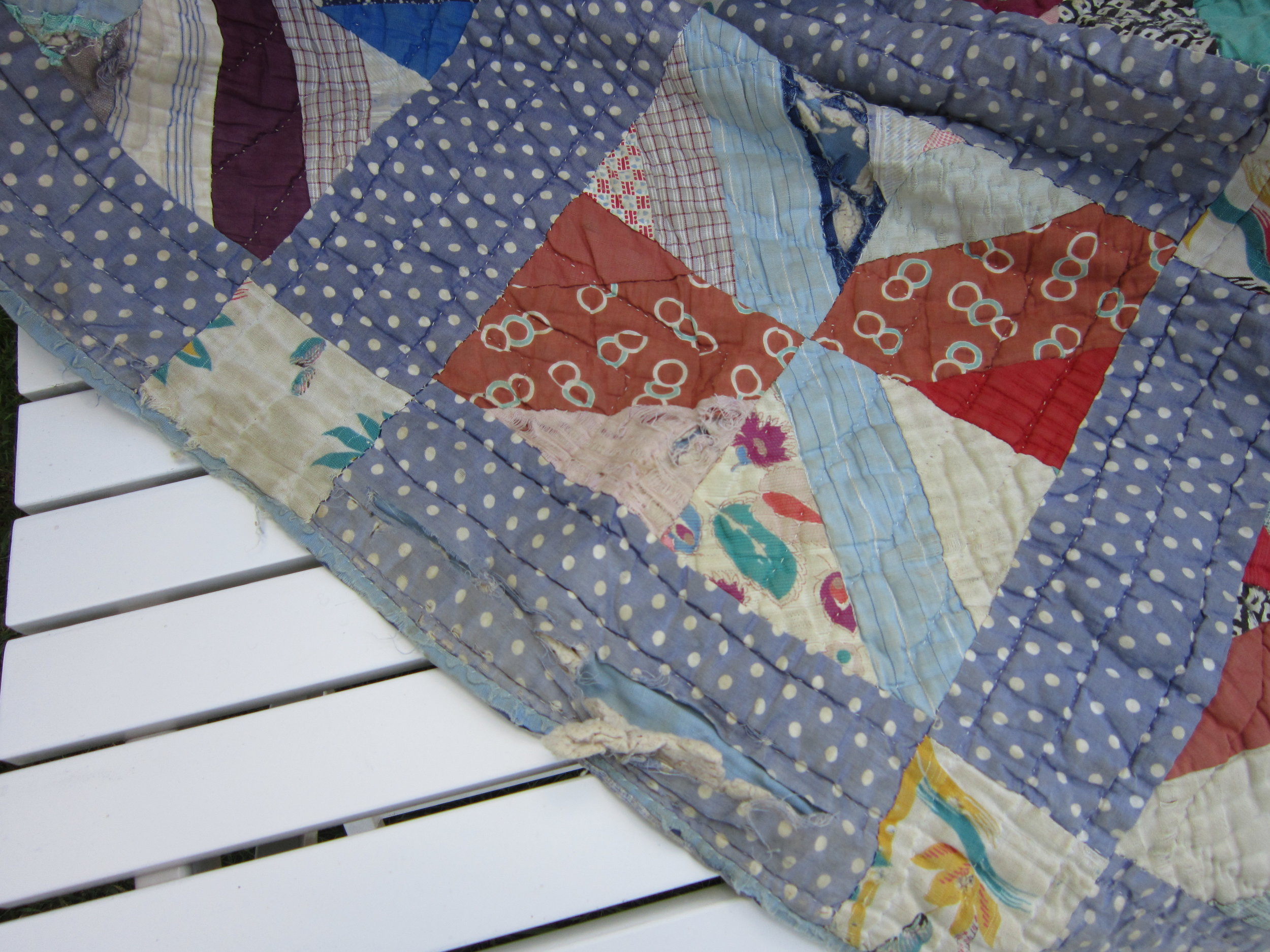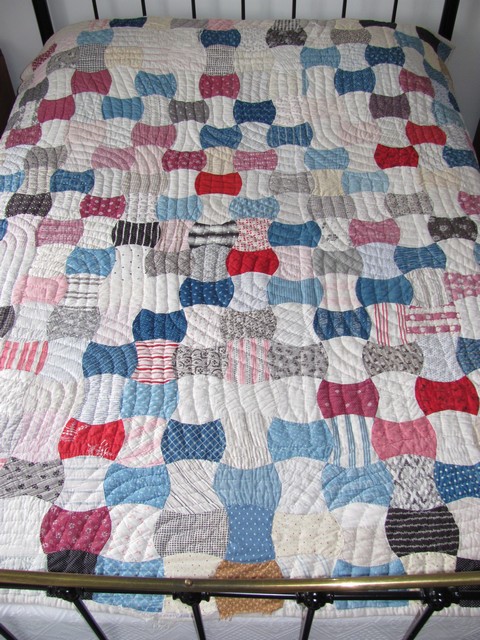Like all of us, there are some chores I loathe and others I quite like. (I won't say love, as that makes me sound very 1950s housewife!). I hate ironing, but quite like washing, or to qualify that statement, I get great satisfaction from a line of laundry in the sunshine. During the summer, the fine weather also means it's a chance to get my old quilts laundered.
I'm often asked how to care for old quilts, so here are a few tips that I find work for me. The photos above are a selection from recent laundry sessions, ranging from dirty 'rag' to clean Apple Core quilt.
1. Don't even think about it during the winter, or your home will smell like a damp dog as you attempt to dry a heavy double quilt over a 3 foot radiator over several days. Choose a fine day, especially when you have time, as it's not a 5 minute task.
2. I always hand wash old quilts in the bath. I find the soaking and washing is less violent than the shenanigans of a washing machine. Use gentle hand wash such as non-Bio Fairy or a specialist textile detergent like Soak. I also put at least one Colour-Run sheet in the first wash, to catch any loose dye (especially important for quilts containing red fabrics). Gently concertina the quilt into the bath, making sure it's all covered by water and suds and leave for at least 30 minutes. When you come back shoosh the water around and don't be surprised if it's the colour of Yorkshire tea! Leave for another 30 minutes. Do more shooshing around and drain, squeezing out as much water and dirt from the quilt as possible.
3. Refill with clean water and detergent and repeat, this time adding some Glo-white (or equivalent) and another sheet of Colour-Run. This time I keep popping back, say every 15 minutes and really start to wash and agitate the quilt (do use rubber gloves if your skin is sensitive - although the water shouldn't be too hot). I think of it like treading grapes, trying to squeeze all the dirt out. You may need to repeat a third time...
4. When you've had enough, drain and rinse with clear water. Now the fun part. If you're feeling brave, squeeze out as much excess water as possible, as wet quilts are incredibly heavy. Now put it on a quick spin in the machine. Eek! I turn the spin speed down to 800, never leave the machine unattended and usually chicken out after 3-4 minutes. It really does help to remove a lot of moisture and speed up the drying, however, there is the risk that the spinning can further shred any worn patches or popped seams. So it's a judgement call as to whether you're thinking of repairing the most aged blocks and fabrics.
5. Finally lay the quilt over the line, peg it well and leave to dry. If it's a sunny day, always lay on the line so the backing fabric is uppermost. I'll also rotate the quilt around on the line so there's no undue strain on any one part. I'll then turn it over later in the day, when the bright sun has gone, so there's no risk of sun bleaching.
Result? One clean, sweetly smelling quilt, ready to be used and enjoyed.
Foot note: old quilts may contain some marks or rust spots that won't come out. I've found that specialist rust stain removers aren't very effective, but if you have a secret 'ages-old stain-remover' tip, let me know!







